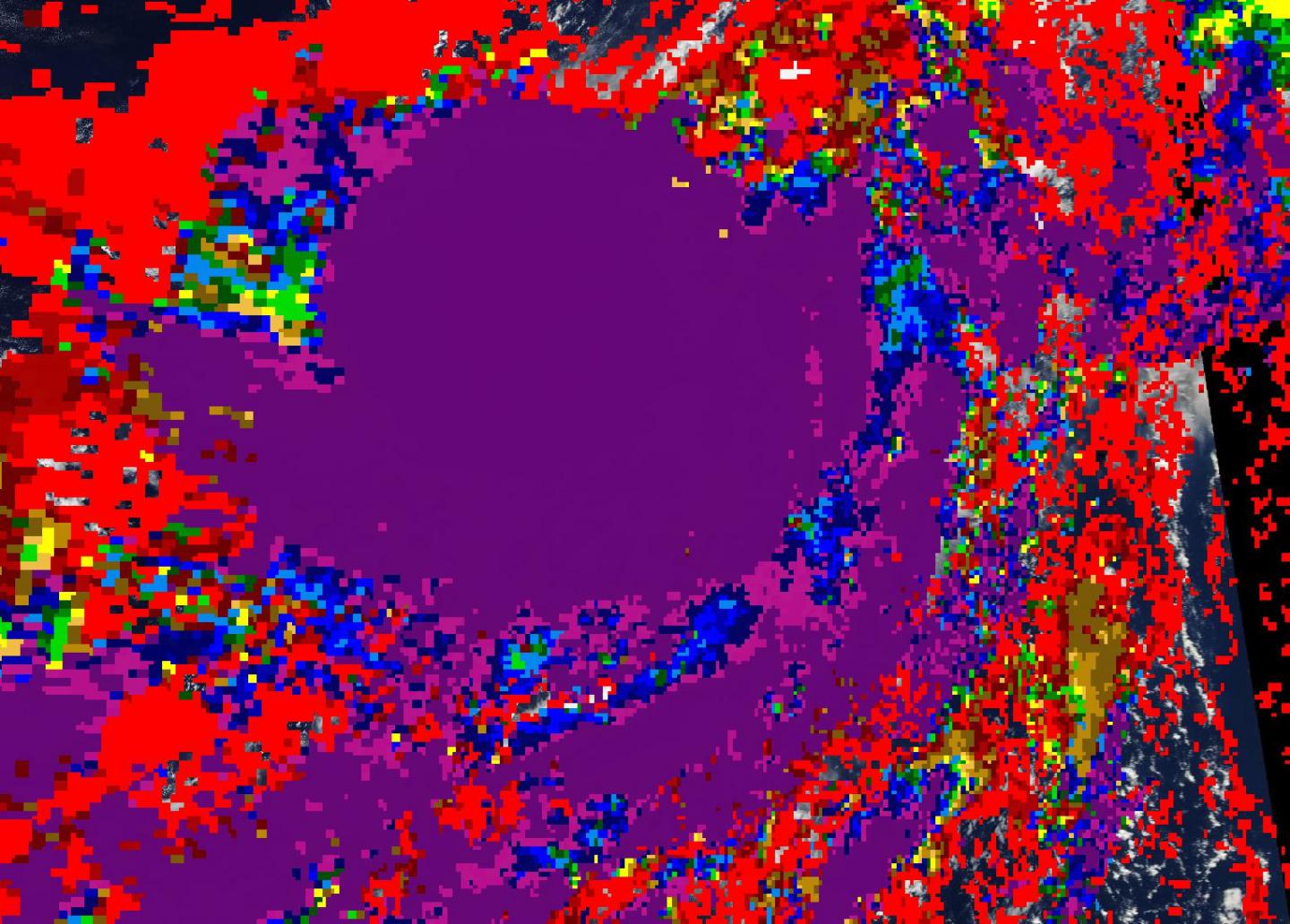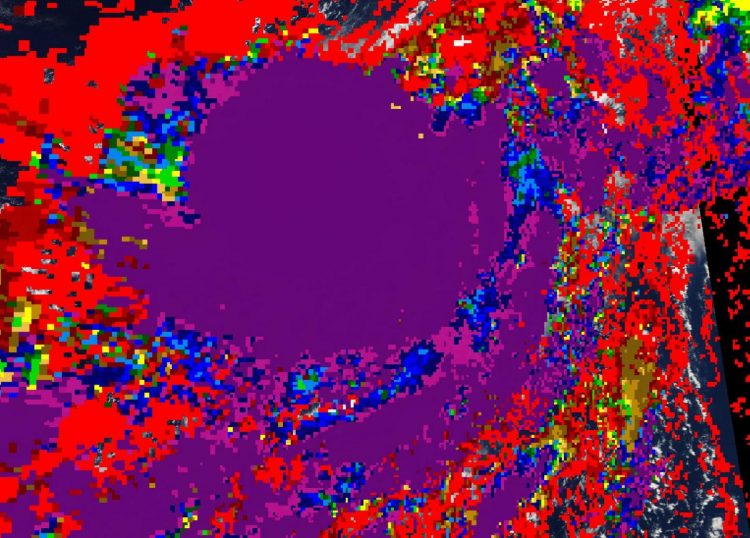
Credit: NASA Worldview, Earth Observing System Data and Information System (EOSDIS)
NASA’s Terra Satellite provides a variety of data on tropical cyclones including cloud heights and cloud top temperatures. Terra examined those factors in Tropical Storm Karen in the North Atlantic Ocean and data showed Karen holding onto tropical storm status.
Tropical cyclones are made up of hundreds of thunderstorms. By analyzing the heights of thunderstorms and their cloud top temperatures, forecasters can tell if a storm is strengthening or weakening. The higher the cloud tops, the stronger the uplift in a storm. That rising air helps thunderstorms develop. As storms go higher, it is an indication that the storm is strengthening. Conversely, if over a period of time, satellite data shows cloud tops falling and warming, it is an indication the storm is weakening because there’s not as strong an uplift or rising air in the storm.
On Sept. 26, the Moderate Imaging Spectroradiometer or MODIS instrument that flies aboard NASA’s Terra satellite measured clouds heights and temperatures. The imagery showed the highest cloud tops, higher than 12,000 meters (7.65 miles) were located around the center of circulation.
Terra data also found that cloud top temperatures were as cold as or colder than 200 Kelvin (minus 99.6 degrees Fahrenheit/minus 73.1 degrees Celsius) in those storms. NASA research has shown that cloud top temperatures that cold have the capability to generate heavy rainfall.
NOAA’s National Hurricane Center or NHC said at 5 a.m. EDT (0900 UTC), the center of Tropical Storm Karen was located near latitude 28.3 degrees north and longitude 61.2 degrees west. Karen is moving toward the northeast at near 8 mph (13 kph). This general motion is forecast to continue this morning, but Karen is forecast to become nearly stationary by tonight or early Saturday. A westward motion is then anticipated by the end of the weekend. Maximum sustained winds are near 40 mph (65 kph) with higher gusts.
Karen is forecast to degenerate into a remnant low by Saturday.
###
The Terra satellite cloud height and temperature data was provided by NASA’s Worldview product at NASA’s Goddard Space Flight Center, Greenbelt, Md.
Hurricanes are the most powerful weather event on Earth. NASA’s expertise in space and scientific exploration contributes to essential services provided to the American people by other federal agencies, such as hurricane weather forecasting.
For updated forecasts, visit: http://www.
By Rob Gutro
NASA’s Goddard Space Flight Center
Media Contact
Rob Gutro
[email protected]
Original Source
https:/






